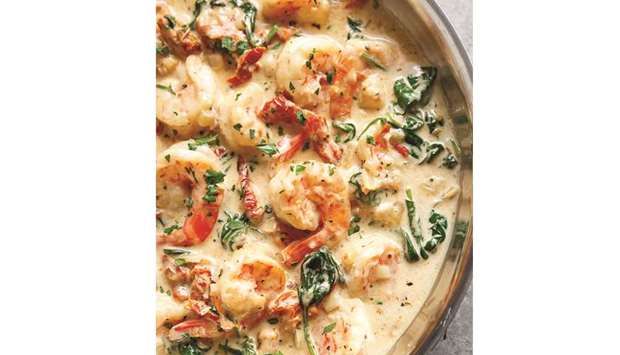One of the best parts about working on a cruise ship was the chance to visit so many different places around the world and cultures while I travelled and earned money. So while I was cruising around Europe, I used to travel to neighbouring destinations near the seaport and explored their culture and food trends.
One mystical place that I visited and still have fond memories of is the Tuscan region of Italy. Tuscany is the central region of Italy and its capital is Florence. Tuscany borders the sea and has an extensive inland area and has a different eating tradition from that of the coastal areas. Throughout Tuscany, olive groves and wild herbs are everywhere. Many of the best olive oils produced in Tuscany are reserved for use as a condiment at the table, rather than as an ingredient in kitchen for cooking. I also brought a bottle of olive oil, which I used to flavour my special dishes.
Food in Tuscany region of Italy has been defined by its elegant simplicity. Their expectations for quality are very high. Rather than create an overly complex dish with exotic ingredients, Tuscans expect to eat produce that is locally grown, in season and at the peak of ripeness.
The flavours of Tuscany are strong and straightforward. The regional recipes are based on outstanding, locally grown ingredients. There are no reductions, no fancy sauces, no elaborate creations, no heavy complicated seasoning in Tuscan cuisine. Butter is mostly used as a condiment at the table, rather than in cooking.
Tuscan extra virgin olive oil is used in almost every recipe in abundant quantity and is even drizzled on top of each recipe in the end. Chick peas, Tuscan kale, artichoke, peas and tomatoes are used in many ways, especially in the rustic preparations. The local salt-less bread is used to thicken many foods like ribollita or twice boiled vegetable soup or in kale or bean soup. Tuscan bread also appears in pappa al pomodoro, a hearty tomato and bread soup, and panzanella, a flavourful tomato and bread salsa.
Pasta plays a small role in the diet, but certainly not as big as it does in the other parts of Italy. Tuscans however consume more salad as compared to the rest of the Italy. The traditional method of cooking beans, particularly broad beans, is to boil it in a glass flask with olive oil and garlic, then setting the flask overnight at the side of a gentle dying fire in the hearth so they will be ready the next day.
Meats and fish are grilled over fire. Vegetables are served raw, steamed or briefly sauteed. In Florence, people didn’t cook with tomatoes until the late 1600s . Their use until then in Florence was restricted to decorating tables. But now tomatoes in various forms are used generously in many recipes.
In the olden days, breads tended to be made without salt. Salt used to be very expensive because of a tax on it, so the money-wise Tuscans simply stopped using it. The downside about bread is that without the salt, it doesn’t stay fresh as long, so Tuscan breads are often only good the day of their baking. Then the next day they are used to thicken the stews and are used to make soups.
Rice dishes are also cooked with rich mixtures of meat, mushrooms and chicken giblets. Giblets or entrails are also used in classic Tuscan dishes like cibreo, or served on bread or crostini as chicken liver pate or stuffing. Tuscany is also known for its simple seafood dishes like cacciucco, a hearty fish stew and mussel soup. Tuscan shrimp is another good example of seafood dishes.
Tuscan Shrimp
Ingredients
Shrimp 500 gm
Unsalted Butter 2 tbsp
Olive oil 2 tbsp
Garlic 5-6 cloves
Yellow onion 1 no
Sun-dried tomato 100 gm
Full fat milk 2 cups
Heavy Cream 60 ml
Salt to taste
White pepper to taste
Baby spinach 2 cups
Parmesan cheese 1/2 cup
Corn starch 1 tsp
Basil leaves few sprigs
Parsley leaves few sprigs
Parsley leaves to garnish
Parmesan cheese to garnish
Extra virgin olive oil to drizzle
Method:
In a heavy bottom skillet, melt butter and add crushed garlic and saute for 1 minute or until fragrant.
Add peeled, deveined and cleaned shrimps and sauté for two minutes on each side or until just cooked through and the shrimps turn pink; remove from flame and keep aside.
Add some olive oil in the skillet and add chopped onion and sauté for 1-2 minutes, add sun-dried tomato and continue to stir for 1-2 minutes to extract the flavour.
Reduce the heat and add full fat milk and bring to a gentle simmer, while stirring occasionally. Season with salt and pepper to your taste.
Add in the washed baby spinach leaves and allow them to wilt in the sauce.
Allow the sauce to simmer for a minute and add dissolved corn starch if you find the sauce too thin.
Add parmesan cheese and heavy cream; stir until cheese melts, add the sautéed shrimps and mix well.
Sprinkle chopped parsley and parmesan cheese and serve alongside boiled pasta or steamed vegetables or freshly baked bread.
Note: You can use half n half instead on the full fat milk to make the dish creamier and richer to taste.
* Chef Tarun Kapoor, Culinary Mastermind, USA. He may be contacted at [email protected]

Tuscan Shrimp Photo by the author


